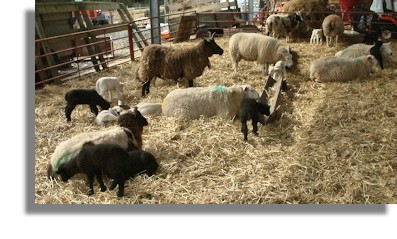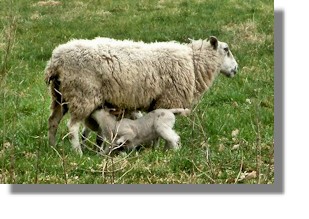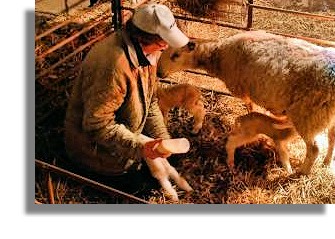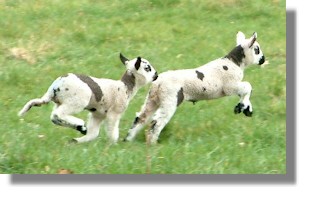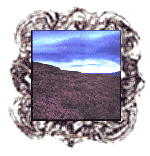

Lighthouse Letters
By Sharma Krauskopf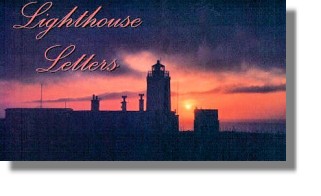
This is an article by Sharma Krauskopf from Michigan who fell in love with Scotland - and decided to buy a lighthouse keepers' cottage at Eshaness, a remote location in Shetland, in the far north of Scotland and live there each winter. These pages were previously part of the "Scottish Radiance e-magazine Web site which was created by Sharma.
Lambing - Necessity, Not Tradition
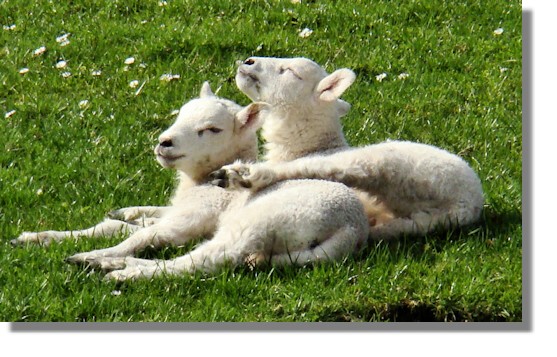
With the arrival of spring comes the busiest time of year for many of the farmers of Shetland It is known as "lambing." The time of year when Scotland's millions of ewes are giving birth to new lambs. These baby sheep are definitely a crop in the sense their whole lives have been planned so they can end up on some consumer's dinner plate as leg of lamb or maybe lamb chops. Everything is carefully timed from the lamb's conception to the trip to market to maximize the farmer's income from this crop.
Don't get me wrong just because the lambs are considered a crop that the farmer's of Scotland treat them with indifference. Scotland's farmers are conscientious shepherds. During the lambing season most Scottish farmers are on call 24 hours a day. They are constantly making rounds to check if a ewe is having trouble giving birth or a new born needs assistance to get on their feet. The most critical issue is newborn baby lambs get a suck of their mother's milk as soon as possible. Without it they could die.
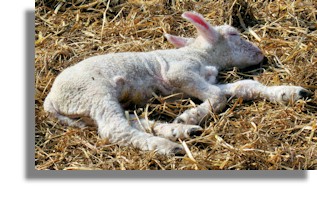
Baby lambs are susceptible to wet and cold. It is heart-breaking to see the infant lambs struggling to their feet shivering from the cold when the weather is unduly wet and cold. And rainfall in April can be torrential too. The farm where I was assisting friends with lambing this year lost twenty-one lambs in one day. I heard on the news yesterday that another farmer lost forty-five lambs in a day. It is devastating to see so many of the gentle little creatures die in such circumstances.
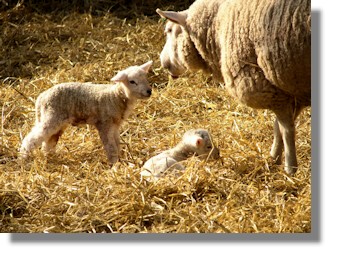
Another side of lambing is taking care of lambs that have lost their mothers. Two common ways to approach this is if a ewe has lost her lamb and has plenty of milk her dead lamb is skinned and the skin is placed on an orphan lamb. The ewes identify their lambs by smell. After a few days the ewe comes to accept the baby as her own. If there is not a ewe available or the ewe rejects the lambs they have to be bottle fed by the humans.
I have been fortunate to be involved in the bottle feeding of orphan lambs. You get extremely attached to your charges. It has always given me great joy pretending to be "mother" to baby sheep. (Graphic here of a lamb being bottle fed is by Paul Sumner, via Wikimedia) Because I do not live on a sheep farm I have never had to go through the process of watching these "pets" be put with the other sheep and then sold. To me they are just pets and I often name them while they are in my charge.
Lambing is a Scottish tradition but most of all it is a necessity for the survival of the farms and crofts. The lighthouse's neighbouring crofters frequently greet each other with "How is lambing?" Everyone is hoping for dryer weather and warmer temperatures and although I have no sheep I am praying that they will get what they need.
Sharma
Return to Index of Lighthouse Letters or Index of All Guest Writers
